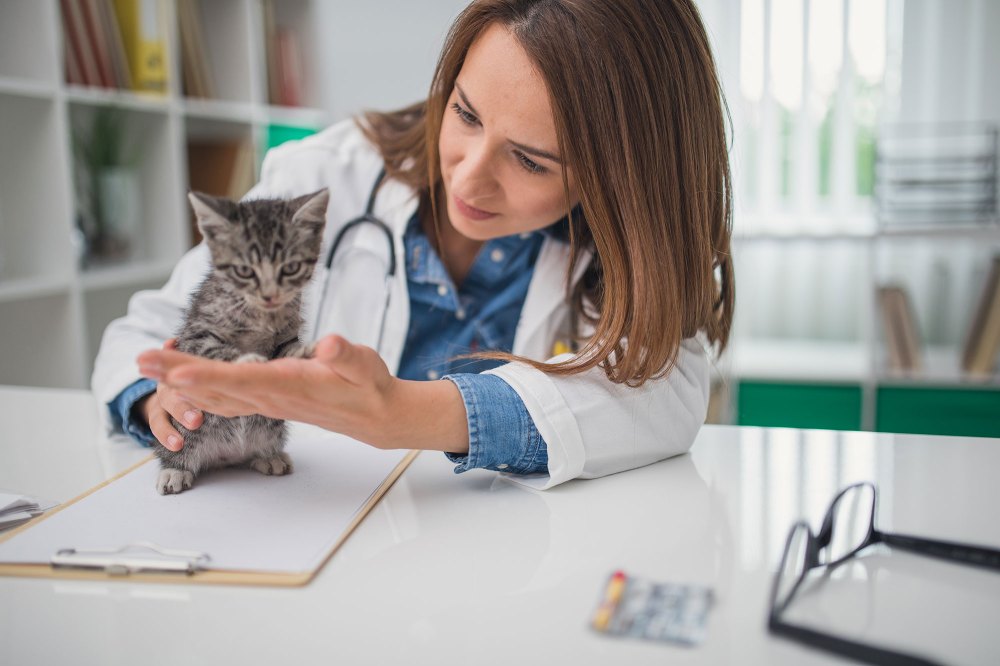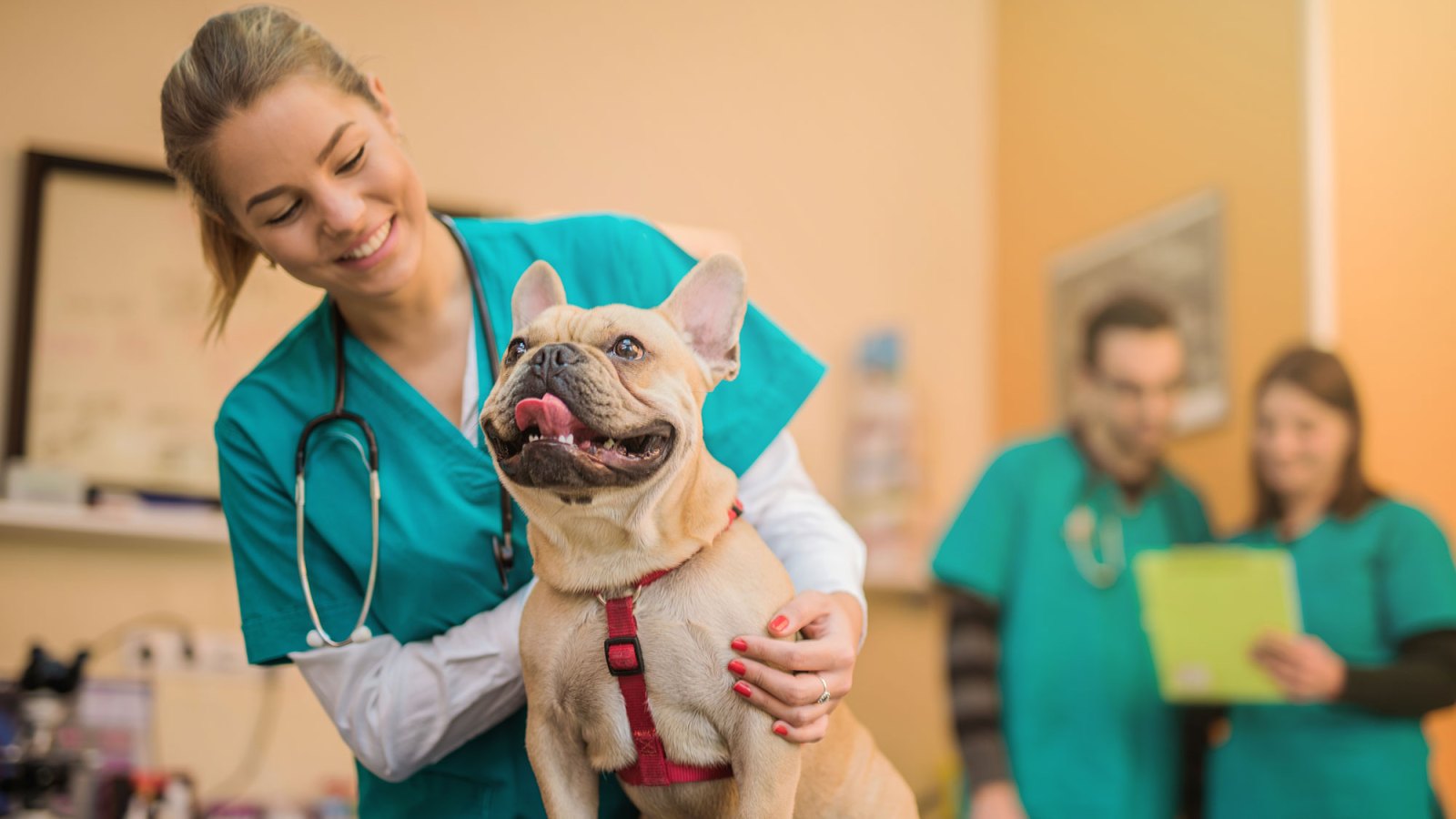It’s November and that means turkey, family time, pumpkin pie and more — but, for the well-being of your pet, it’s a good idea to put down the fork and take some time to think about something a little more serious: diabetes.
It’s important to diagnose the condition early and with November being National Pet Diabetes Month, the best way to do that is by being informed (cue The More You Know music here).
We rounded up five critical things you should know about diabetes in pets and consulted Dr. Orla Mahony, a board-certified small animal internist and clinical assistant professor at Cummings School of Veterinary Medicine at Tufts University, for some expert advice and information.
1. Understand what diabetes does.
When a cat or dog eats something, its body usually converts it to energy and the animal can then go about its day — for cats, swatting at cat toys, for dogs playing fetch. The body of a pet with diabetes is a bit more tricky because it can not convert glucose — the main source of sugar for the cells in the body — to energy.
Pets with diabetes have trouble producing or regulating insulin, the hormone made by the pancreas which regulates levels of glucose in the blood. High sugar levels can cause damage to the kidneys, heart and more and without energy to keep things going, fats and proteins will be broken down by the body which causes weight loss.
2. Know the signs of diabetes.
According to Mahony, increased thirst, increased urinations, urinary accidents in the house/urinating outside the litter box, increased appetite (although some pets have normal to decreased appetite), weight loss, and lethargy are some of the signs of diabetes that pet parents may observe.
“Some pets have only one or two signs, and some owners miss the early signs and don’t realize there is a problem until their pet stops eating or is vomiting,” Mahony explains. “The early signs can be missed because some people may expect older pets to have to urinate more often, and as long as they have a good appetite, may not realize there is a problem.”
Pets can exhibit zero signs and still be at risk for diabetes but the risk of that, says Mahony, is low.

3. Some pets are more at risk than others.
Cats that are obese, cats that are receiving corticosteroids for another problem, dogs with a history of pancreatitis or Cushing’s disease — these animals would be more at risk for diabetes than others, Mahony says. What’s also interesting is that diabetes can be inherited. Certain breeds of dogs and cats are at greater risk, like Australian terriers, Samoyeds and Burmese cats.
Keeping up with regular vet visits, feeding (and not over-feeding!) your pet healthy meals, and spaying female dogs can help your fur kids stay out of the at-risk category, but there are no guarantees. “There are no easy ways to prevent diabetes,” Mahony says, “although preventing cats from becoming obese is helpful.”
4. Diabetes is treatable.
Each pet that is diagnosed with diabetes will receive a treatment plan that will require some level of commitment from the pet owner (hey, like marriage, you promised to be there during sickness and health!) Treatments can include monitoring your pet’s diet and keeping it consistent, providing your pet with exercise, and administering twice daily insulin injections — if the latter terrifies you, take a deep breath and read on.
“Contrary to what one might think, cats and dogs are very tolerant of insulin injections and quickly associate meal times with their shots,” says Mahony. “Insulin shots are practically painless and in most instances, it is far easier [to] give a tiny insulin shot to a cat than try to administer a pill. Veterinarians can work with clients to develop various treatment and monitoring plans that meet their needs.”
A common misconception is that complications will occur, but that, says Mahony, doesn’t happen often. “Many owners of diabetic pets fear that their pet will develop low blood sugar and seizure,” she explains. “In fact, this complication is infrequent and veterinarians try to avoid tight control that risks excessive lowering of blood sugar. Newer technologic advances are also making it easier to monitor pets’ sugars at home.”
5. Pets with diabetes (and the parents who care for them!) can live normal lives.
Everybody want to leave the veterinarian’s office with a clean bill of health, but if your pet receives a diabetes diagnosis know that it is not a death sentence. It’s a fact that dogs and cats with diabetes can lead very normal lives.
“When faced with a diagnosis of diabetes, many clients fear that their lifestyle and their pets’ quality of life will be adversely affected,” she says. “Like any big change, it can be a challenge initially, but hang in there, and after a month or so it becomes routine.”
Us Weekly articles and content are for informational purposes only. Nothing contained in Us Weekly articles and/or content is or should be considered, or used as a substitute for, veterinary or professional advice, diagnosis or treatment. If you believe your pet may have a medical emergency, call or visit your veterinarian or your local veterinary emergency hospital immediately.


